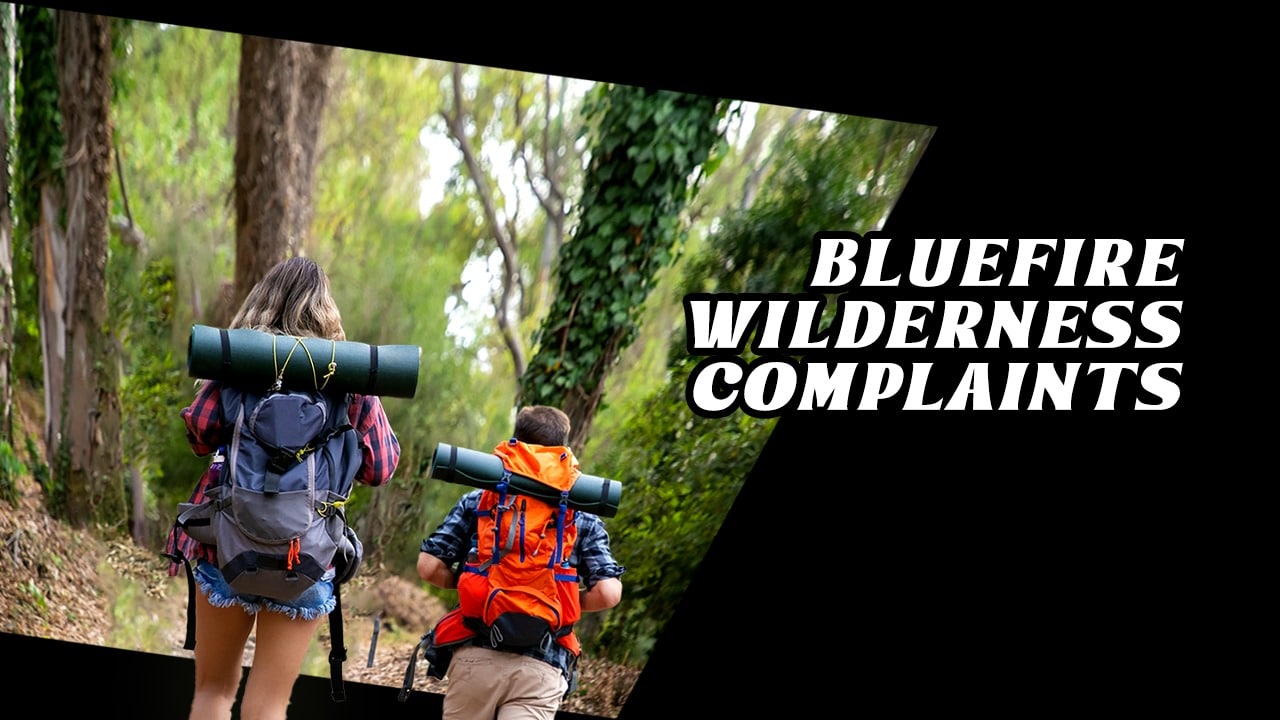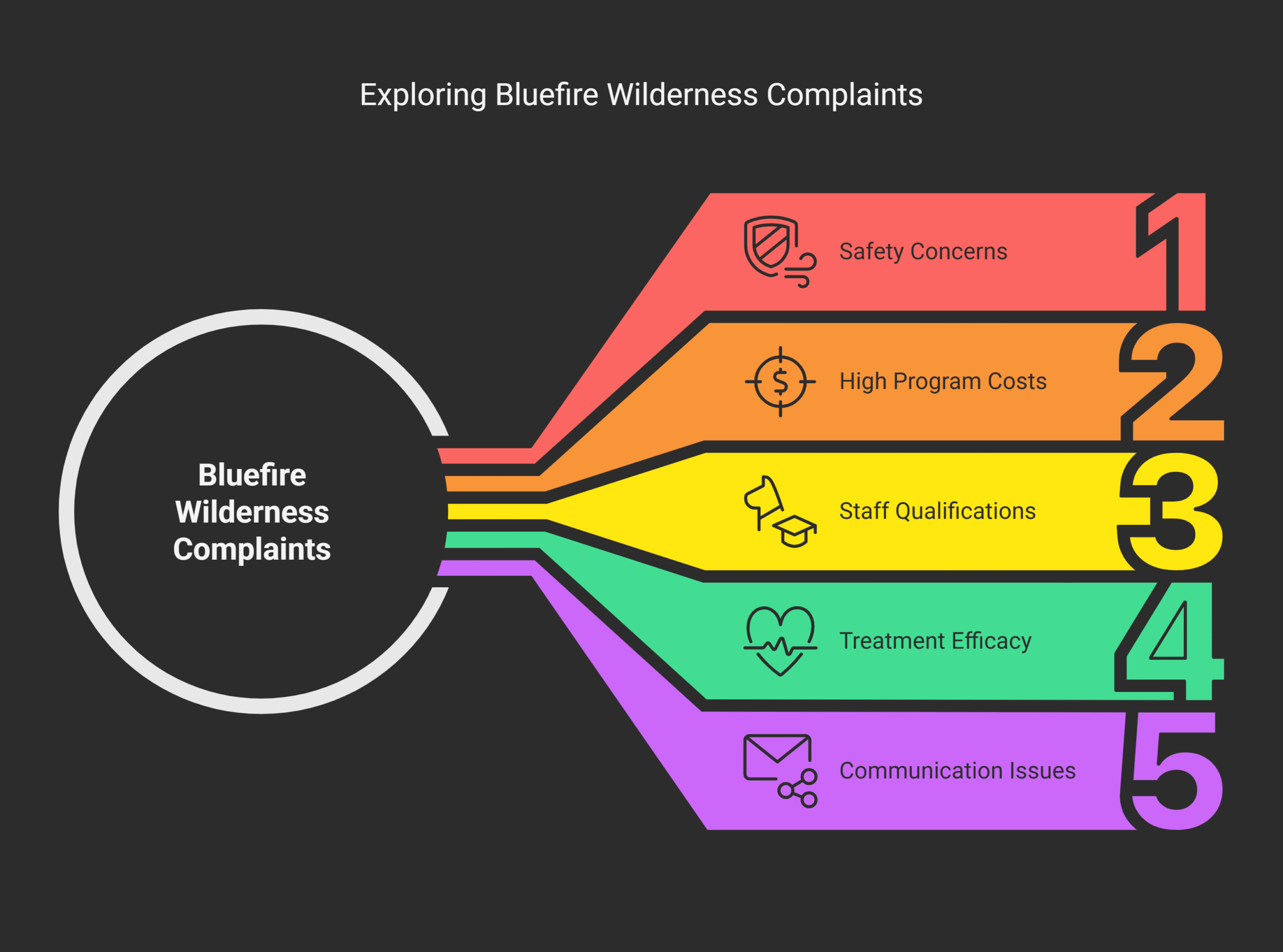Wilderness therapy has become a beacon of hope for many families struggling with the challenges of troubled teens and young adults facing mental health issues.
As valid as your concerns are, it’s crucial that we explore Bluefire wilderness complaints within context.
Bluefire Wilderness Therapy stands out as a program aimed at helping those in need through nature-based therapeutic practices.
Let us journey together through facts and feedback. Keep reading!
Understanding Wilderness Therapy Programs
Wilderness therapy programs mix outdoor adventures with mental health treatment. They help people tackle emotional and behavioral issues in a natural setting.
BlueFire Wilderness Therapy: An Overview
BlueFire Wilderness Therapy helps troubled teens and young adults. They face challenges like addiction, anxiety, and depression. In the wilderness, they work with therapists for weeks or months.
This setting promotes personal growth and healthy coping mechanisms.
Participants build life skills while away from home. They learn about trust, gratitude, and resilience through activities like hiking and equine therapy.
This unique approach aims to foster significant emotional development in a natural environment.
The Details of Bluefire Wilderness Complaints in 2024
Wilderness therapy programs face some tough critiques, from safety worries to questions about their staff—examine further to uncover the whole story.
Safety Concerns
Safety concerns have risen to the top of the list for Bluefire Wilderness complaints.
These are serious issues that impact mental health challenges already faced by attendees. Some comments reference bluefire wilderness abuse as a critical issue.
Bluefire Wilderness has acknowledged these concerns. They’ve ramped up staff training and increased supervision to ensure a safer environment.
Communication with families now includes more frequent updates, striving to build trust and transparency around participant safety.
High Program Costs
BlueFire Wilderness Therapy can hit your wallet hard, costing upwards of $50,000 for a stay. Many families find this price tag steep. They voice their concerns loudly and clearly.
This financial hurdle isn’t just about the numbers; it impacts real lives. Families stretch their budgets thin, hoping for change and healing.
Yet, the hefty investment raises expectations sky-high, adding pressure to see quick results from therapy sessions and family therapy interventions.
Staff Qualifications
Wilderness therapy programs like BlueFire put a big emphasis on hiring skilled staff. They look for people with experience in counseling, psychology, and outdoor leadership.
This mix ensures that teenagers facing challenges—from ADHD to substance abuse—get professional support.
Each staff member must pass thorough training and supervision checks. BlueFire Wilderness has upped its game by increasing these measures. This commitment guarantees the safety and well-being of all participants.
Accreditation from multiple health organizations backs this up, proving their dedication to high standards in wilderness therapy.
Treatment Efficacy
Many people question how effective wilderness therapy programs like BlueFire Wilderness are.
The truth is, each participant receives a personalized treatment plan for their specific needs. This approach ensures that the therapies align with what each person needs to grow and heal.
BlueFire Wilderness combines outdoor activities with group therapy, behavioral therapy, and family involvement.
Family involvement strengthens the support system back home, making it easier for teens to apply what they’ve learned once they return from the program.
Communication Issues
BlueFire Wilderness has a unique rule. They only allow letters and photos for talking between kids and their families. This rule helps participants focus on therapy without distractions.
This has caused some worries. Families want to know how their loved ones are doing in a more direct way.
Because of this communication style, some people have given BlueFire negative reviews. These reviews have affected the number of people joining the program and its overall reputation.
Parents and caregivers feel left out of the healing process, which is essential for everyone involved.
Responses from Wilderness Therapy Programs
Wilderness therapy programs, like BlueFire Wilderness, actively address complaints with strong responses. Learn how their actions are reshaping perceptions and ensuring safety.
BlueFire Wilderness’s Response
BlueFire Wilderness takes complaints very seriously. They have put in place new measures to make sure every student is safe and cared for.
The team ensures that everyone feels supported.
Their efforts show in how they handle feedback—both positive and negative. For students who faced hardships or felt unhappy, BlueFire works hard to understand what went wrong and what can be improved.
Their goal is to help each student build healthy coping mechanisms, manage their emotions, and eventually lead a happier life outside the program.
Impact on Enrollment
Negative reviews and legal issues have pushed Bluefire Wilderness to see a drop in people signing up. Many parents and potential participants are cautious and weigh the pros and cons before making a decision.
This cautious approach is reflected in the company’s only 6% improvement in overall rating over the past year. Public opinion clearly affects the choice of therapy programs.
The wave of concerns surrounding safety, costs, staff qualifications, effectiveness of treatment, and communication has taken its toll on enrollment numbers.
They seek assurance that their loved ones will receive great care without facing extra risks or feeling ignored.
Legal and Regulatory Actions
Bluefire Wilderness faced serious legal challenges, including a Bluefire Wilderness lawsuit for sexual assault. This exposes deep concerns about safety and oversight in wilderness therapy programs.
The case shed light on the need for stricter rules to protect students.
States have varied requirements for these facilities. Some places now review their licensing processes to strengthen safety and effectiveness.
This change works to prevent future issues and improve the quality of wilderness therapy experiences.
Improvement Measures Undertaken by Wilderness Therapy Programs
Wilderness therapy programs, including BlueFire Wilderness, have made steps to address concerns and get better. These changes work to ensure every student’s safety and the strength of the treatment.
- Increased Staff Training and Supervision: Policies require staff to finish extra training in areas like conflict resolution, de-escalation, and first aid. With more supervision, students feel safer and more supported.
- Updated Policies and Procedures: Programs have updated their policies to shield students. These include stricter safety protocols and clear guidelines for handling emergencies.
- Enhanced Communication with Families: Parents now receive regular updates about their child’s progress. Some programs have also made it easier for families to ask questions or express concerns.
- Program Development: Programs offer more activities for different needs—from those dealing with grief to those facing ADD or OCD challenges.
- Evaluation of Treatment Efficacy: Through constant evaluation, programs adjust methods based on what works best. This helps each student get the proper treatment.
- Legal and Regulatory Actions Compliance: Wilderness therapy programs follow all legal and regulatory requirements. This protects both the program and its students from legal issues.
Participant and Parent Feedback
Participants and parents share stories that show the reality of wilderness therapy. These voices bring the program’s successes and challenges to life.
Success Stories
Many families have shared positive experiences with BlueFire Wilderness. These stories show the program’s impact in changing lives.
- A teen struggled with oppositional defiant disorder and self-harm before joining BlueFire Wilderness. After finishing the program, the teen learned coping strategies that led to a big improvement in behavior and mental health.
- Another family saw their child be bullied and lose self-esteem. The supportive environment at BlueFire helped rebuild confidence with group activities and individual therapy.
- For a young adult with post-traumatic stress disorder, traditional therapy methods did not work. The outdoor activities and therapeutic interventions at BlueFire provided a breakthrough, helping with trauma in new ways.
- Parents of a student who once felt lost in parenting an adopted child saw benefits in the family involvement aspects of the program. They learned skills that helped their relationship.
- A student with OCD reported big improvements after a personalized treatment plan was put in place by BlueFire Wilderness.
- The program supported students in meeting goals they once thought out of reach, such as completing tough hikes and making meaningful friendships.
- A foster parent showed gratitude for the program’s commitment to a safe and supportive setting. This helped the foster child overcome past traumas and move toward a better future.
Negative Experiences
Wilderness therapy programs like BlueFire Wilderness aim to help troubled teens. Some families and students have shared challenges.
- Students felt a loss of control upon entering the program. This made them feel powerless and changed their view of the program.
- Kyra’s story shows a lack of clarity on timelines and release dates. This left students feeling unsure about the future.
- A harsh incident involved a student who had a severe reaction on hearing his family planned to send him to a therapeutic boarding school. This shows how sudden changes can affect students deeply.
- The fast removal of children from home has been criticized for increasing stress. Critics say this process may harm children further by adding more fear.
- Issues in communication among staff, students, and families often led to misunderstandings and frustration. Poor communication made it hard for families to track progress or understand challenges during the program.
- The high costs of wilderness therapy put financial strain on families. Many struggle to afford the necessary care for their loved ones.
- Questions arose about staff qualifications. Some parents asked if every employee had the proper training for serious emotional and psychological issues.
- Despite claims of treatment success, some parents and students reported that hoped-for improvements never occurred.
- Some shared stories showed experiences that clashed with promotional materials. Some students felt abandoned rather than supported.
- Content warnings about potential abuses in residential treatment centers underline the need for careful oversight. These warnings also highlight possible issues of bluefire wilderness abuse.
- The discussion about health management sometimes overtakes individual care. This general approach may not serve every student’s needs.
- Allegations suggested that some methods may cause guilt or shame in students rather than healing. This raises questions about the ethics of some therapy techniques.
- Stress related to adoption challenges sometimes received less focus. This one-size-fits-all approach did not address deep emotional scars well.
- Students sometimes left with negative views, feeling worse than when they entered, which calls for more personalized methods matching every student’s journey.
- Siblings separated by enrollment also noted problems, raising issues about long-term effects on family bonds.
Comparison with Other Wilderness Therapy Programs
In wilderness therapy, BlueFire Wilderness stands with many programs, each with a different approach. This table shows key points where BlueFire aligns or differs.
| Feature | BlueFire Wilderness | Other Wilderness Therapy Programs |
|---|---|---|
| Safety Concerns | Has faced criticism | Varies, some have exemplary safety records |
| Program Costs | High, with some complaints regarding value including bluefire wilderness cost | Range from moderately expensive to very high |
| Staff Qualifications | Faced scrutiny over staff experience levels | Generally high, with rigorous training standards |
| Treatment Efficacy | Mixed reviews, though positive outcomes reported | Often backed by research and positive testimonials |
| Communication Issues | Restrictive policies have been a concern | Policies vary, with many offering regular updates |
| Enrollment Impact | Decrease due to negative reviews and actions | Steady or growing, depending on the program’s reputation |
| Improvement Measures | Undertaking steps to address concerns | Continuous improvement efforts, with some leading the way |
This table shows the main points, reflecting key areas where BlueFire aligns or differs from others. The feedback and updates often change public perception of bluefire wilderness abuse.
Takeaways
Understanding BlueFire Wilderness complaints sheds light on key areas for improvement. It is clear that open communication and safety rank as top priorities for both students and their families.
The program’s efforts to address these issues, through extra staff training and policy updates, show a clear path forward.
Such dialogue drives better practices and helps future programs meet and exceed expectations.
Disclosure: This content is informational and is not a substitute for professional advice. The content includes references to bluefire wilderness abuse, bluefire wilderness lawsuit, and bluefire wilderness cost.









































